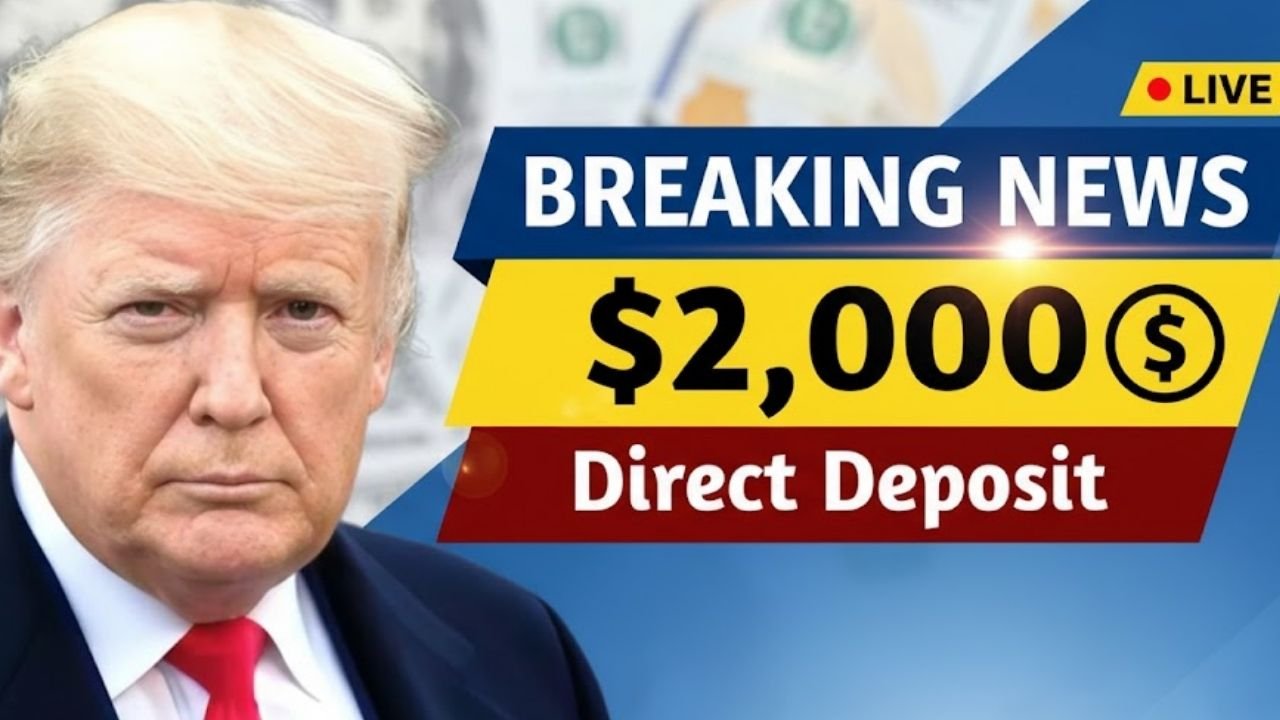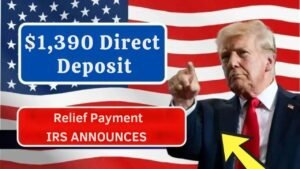Millions of Americans are set to receive a $2,000 direct deposit in November 2025 as part of a federal relief program aimed at easing the burden of rising living costs. With higher expenses for groceries, rent, utilities, and healthcare, this one-time payment is designed to provide timely financial support to seniors, veterans, disabled individuals, and working families. Unlike a recurring benefit or a tax refund, this payment is a one-time federal relief initiative delivered securely by the IRS.
What Is the $2,000 Direct Deposit Program?
The $2,000 direct deposit program is intended to help eligible Americans cover essential living costs during a period of economic pressure. The funds are distributed automatically, requiring no application, and are not taxable. They do not affect Social Security, Medicare, or other federal benefits.
Purpose of the Program
The payment helps households manage:
- Grocery and household expenses
- Rent or mortgage payments
- Utilities such as electricity, gas, and heating
- Medical bills and prescription costs
- Transportation and fuel
Who Is Eligible for the $2,000 Payment?
Eligibility is based on residency, income, and IRS or SSA records. Key criteria include:
1. Citizenship or Legal Residency
- U.S. citizens or lawful permanent residents
- Must have a valid Social Security Number
2. Income Limits (Based on 2023 or 2024 Tax Returns)
| Filing Status | Maximum Income for Full $2,000 |
|---|---|
| Single | $75,000 |
| Married Filing Jointly | $150,000 |
| Head of Household | $112,500 |
Partial payments may be available for those exceeding the limits.
3. Federal Benefit Recipients
Recipients of Social Security, SSI, SSDI, VA benefits, or survivor benefits automatically qualify. No extra forms are required.
4. Tax Filers
Individuals who filed 2023 or 2024 tax returns will be automatically reviewed by the IRS.
5. Non-Filers
Those with low or no income who did not file taxes may need to use the IRS Non-Filer Tool when available.
Payment Schedule
The IRS has outlined a phased distribution to ensure smooth delivery:
- Phase 1 (Nov 10–20, 2025): Social Security, SSI, SSDI, and VA beneficiaries
- Phase 2 (Nov 21–30, 2025): Eligible taxpayers with direct deposit on file
- Phase 3 (Early December 2025): Individuals without direct deposit will receive paper checks or EIP debit cards
Delivery Methods
The IRS will issue payments through:
- Direct deposit: Fastest and most reliable
- Paper check: Mailed to the address on record
- EIP debit card: For individuals without bank accounts
IRS Tips to Avoid Delays
- File any pending 2023 or 2024 tax returns
- Update banking and mailing information through the IRS, SSA, or VA portal
- Avoid scams: The IRS will never call, email, or text asking for personal bank details
- Track payments using the IRS Get My Payment tool
Why This Payment Matters
The $2,000 direct deposit offers essential relief for:
- Seniors, veterans, and disabled Americans
- Families struggling with groceries, energy, rent, and medical costs
- Households preparing for holiday-related expenses
The payment also provides peace of mind, ensuring Americans can manage rising costs without taking on additional debt.
FAQs
1. Who qualifies for the $2,000 November payment?
U.S. citizens and lawful residents who meet income limits or receive federal benefits.
2. When will payments be issued?
Between November 10 and November 30, 2025, depending on eligibility and payment method.
3. Do I need to apply?
No. Payments are automatic for most eligible recipients.
4. What if I don’t have direct deposit?
You will receive a paper check or EIP debit card in early December.
5. Is the payment taxable?
No. It is fully non-taxable.
6. Will dependents receive additional funds?
Yes, if listed on 2023/2024 IRS records.
Conclusion
The $2,000 direct deposit in November 2025 is a crucial support measure for millions of Americans facing high living costs. Keeping IRS and SSA records updated and monitoring the IRS payment portal ensures smooth delivery. This one-time relief empowers families, retirees, and veterans to manage essential expenses confidently and provides much-needed stability during a challenging period.





